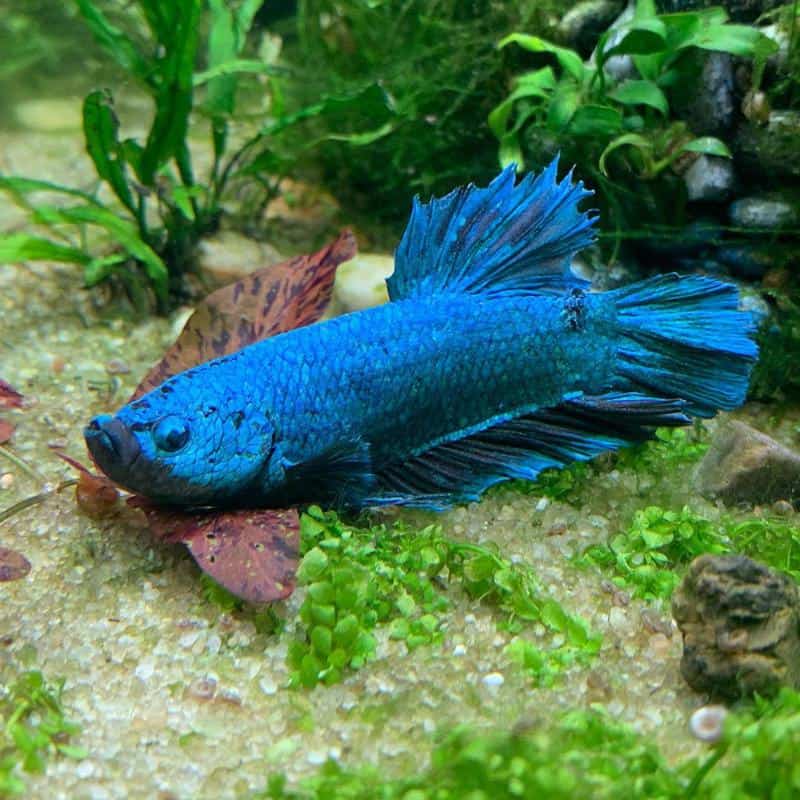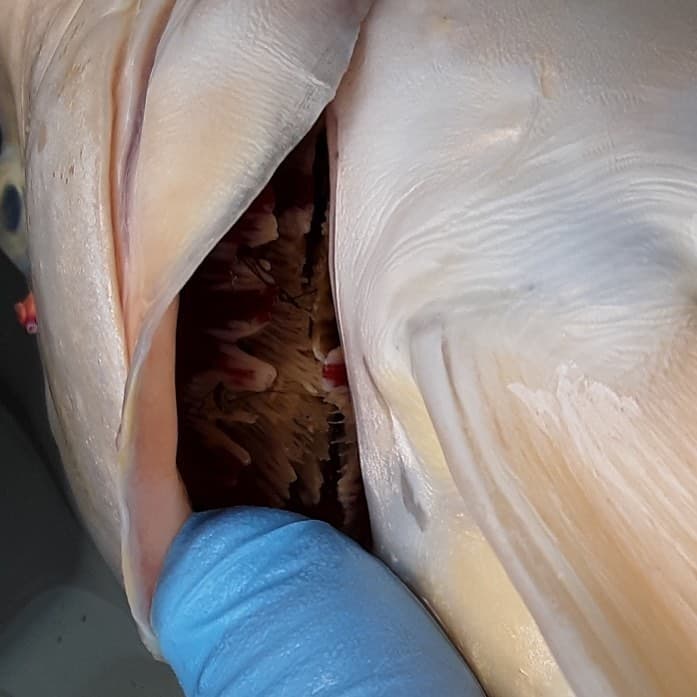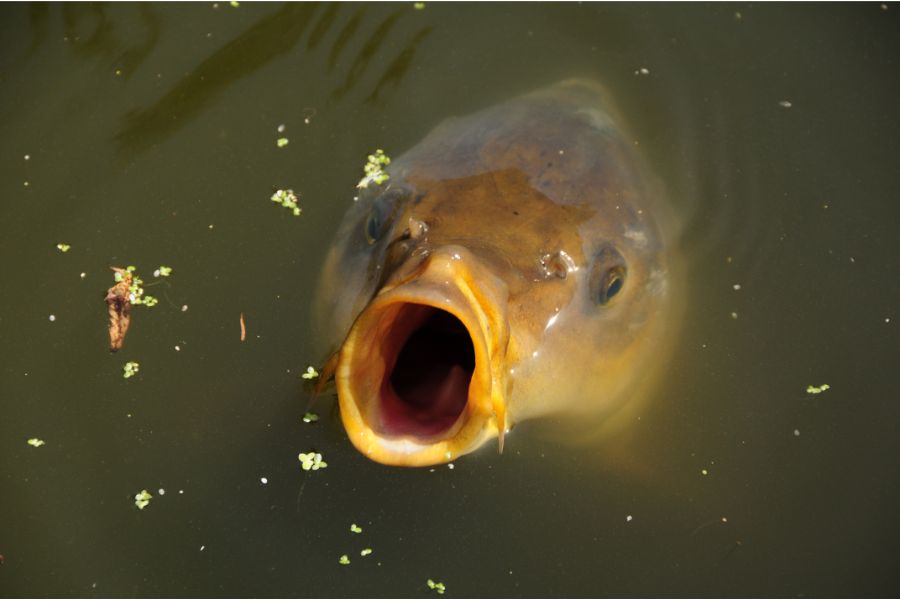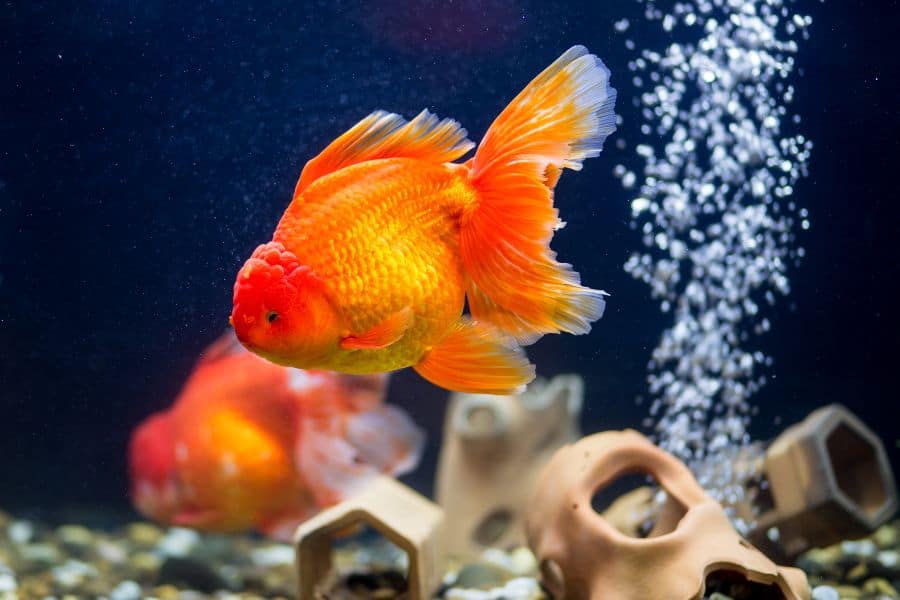In humans, drowning is the 3rd leading cause of unintentional injury, estimating its annual global death toll to 236,000. And believe it or not, the incidence of drowning in fish is far more bigger, wider and more frequent.
But how is this possible since fish are aquatic animals, and they are well adapted to breathe and live their entire life in the water?
Join us in this article as we examine the true meaning of drowning, how a fish can drown and the factors associated with this tragic event.
Definition of Drowning and Its Application to Fish
While there are many definitions, drowning is simply a respiratory impairment resulting from immersion in liquid like water. With this definition, fish can definitely drown. However, drowning in fish is not similar to how humans and other non-aquatic organisms drown.
We typically refer to drowning in humans as the inhalation of water going to the lungs that causes respiratory distress and death.
But fish do not have lungs, and how can they drown if they are already immersed in the water? The answer lies in the word “respiratory impairment”.
Instead of lungs, fish breathe through a pair of gills. This is a thin and feathery structure on the side of their head that is covered with a bony sheet called the operculum.
When fish inhale, they open their mouths allowing water to enter and pass through the gills where dissolved oxygen (or DO) in the water is absorbed.
After inhalation, they exhale by releasing the deoxygenated water out of the operculum. It is why you see a constant and coordinated movement of their mouth and their operculum.
When the water is low in dissolved oxygen, this is when respiratory impairment kicks in where your fish can suffocate and drown. Since oxygen deficiency is often the leading cause of drowning in fish, expect that all of the fish living within that body of water that has low dissolved oxygen will drown, causing mass mortality.
An example of this massive fish mortality recently happened in Australia where low dissolved oxygen levels claimed thousands upon thousands of fish.
Indicators of A Drowning Fish
Fish cannot yell HELP, and that is also definite. But there are indicators that you can look into that may give you an idea that your fish is struggling and may be at their initial stage of drowning.
Warning: These indicators may also indicate other fish conditions. Do not rely on just a single indicator, and having two or more indicators will definitely give you a hint that your fish is drowning.
Inflamed Gills
The gills of a fish have tiny blood vessels called capillaries that extract and absorb dissolved oxygen in the water and distribute it to the other parts of a fish’s body through the bloodstream.
When your water has low dissolved oxygen, what happens is that these capillaries increase their activity to absorb more oxygen. In effect, they become damaged, and as a natural defense given by their immune system, their gills become inflamed.
Depending on the size of your fish, the inflammation of their gills can be seen as the size becomes large and the operculum will not completely close.
Caution: The cause of gill inflammation is not only due to low dissolved oxygen. Other factors can also trigger the enlargement of gills, such as being irritated by infection and pollution.
Becoming Motionless

Your fish consumes energy when swimming, especially when they are highly active and need constant oxygen supply.
If the dissolved oxygen level in your water becomes low, a fish’s response is to save energy and consume less oxygen. They do this by decreasing their metabolic rate, slowing down their movement, and eventually become motionless. This behavior is called the passive drowning response.
Slowing down their movement is an instinct of fish to minimize energy consumption and extend their waiting time until the dissolved oxygen level is back to normal.
If the non-movement of your fish is associated with the low dissolved oxygen level, then you can safely say that your fish is in survival mode.
Caution: Aside from the passive drowning response, a motionless fish can also indicate other conditions, like resting or sleeping.
Erratic Swimming Pattern
Fish seldom do erratic swimming when their conditions are okay. However, if conditions deteriorate (especially when dissolved oxygen levels are low), they make irregular swimming patterns, like darting or circling around.
This indicator can also be combined with other indicators like motionless where some fish are recorded to be non-moving and then suddenly making a fast and irregular swim, then back to being motionless.
Caution: Erratic swimming of fish can also be caused by poor water quality, temperature fluctuation and diseases.
Also Read: Fish Swimming in Circles
Gasping and Heavy Breathing
To get in more oxygen, fish often do heavy breathing and gasp in water when dissolved oxygen levels are low. Some of the fish will stay where they are, while some may go to the surface and breathe directly from the atmosphere.
Caution: Particularly for gasping, it can be a natural habit like in goldfish or it can also indicate that your fish is experiencing stress.
Loss of Appetite
Since a low DO level can stress your fish, expect their mode of nourishment can also be affected. It may start as having little interest in the food items you typically give, eventually leading to a total loss of appetite.
Caution: Loss of appetite can also indicate other conditions like sickness and suffering from bacterial infection.
Factors that Contribute to Drowning in Fish
Drowning in humans is usually associated with accidents and not knowing how to swim. But in fish, drowning is caused by several factors mostly linked to their health and water conditions.
Low Dissolved Oxygen
The number one cause why your fish suffers from respiratory impairment is low in dissolved oxygen. While it is self-explanatory, there are contributing factors that decrease your DO, like:
Temperature
When temperature increases, it decreases the solubility of oxygen in the water. It means dissolved oxygen is lesser in warm waters and more in colder waters.
Algae Bloom
We hate algae since they rapidly multiply in the tank. As they grow in numbers, they also consume a chunk of your water’s dissolved oxygen.
While you may not encounter problems during the day as they photosynthesize and produce oxygen, it is a different scenario at night.
As your environment gets dark, they stop their photosynthetic activity, use oxygen for metabolism and you will see dead fish the next morning when you wake up.
Also Read: 14 Best Algae Eaters
Poor Water Quality
One of the silent killers of fish is poor water quality, especially when it comes to high nutrient levels that results in difficulty in breathing for fish.
There are two nutrients that can contribute to fish drowning if their levels are above the normal range, namely: ammonia and nitrite.
The normal level of ammonia in a tank is 0 ppm. When its concentration increases due to fish respiration, it can become toxic and burn some of your fish organs, including their gills.
When the ammonia level reaches 0.5 ppm, expect serious gill damage and consider it the endpoint since suffocation and drowning of your fish is inevitable.
When you have a tiny amount of ammonia, it will break down through the nitrogen cycle and become nitrite. While their normal level is 0 ppm, increased concentration will have the same burning effect on your fish.
But what sets nitrite from ammonia is how they interact with your fish blood. Your fish will suffocate from the inside out since nitrite strongly binds with hemoglobin and leaves behind the oxygen to waste.
Out of Water
Except for species that can breathe air (like snakeheads, bettas, and the walking catfish), most fish suffer respiratory impairment when they are out of the water for an extended period.
When out of the water, their feathery gills may dry out and stick together, depriving them to function and absorb oxygen.
Gill Diseases

Aside from the chemical burn brought by the high levels of ammonia and nitrite, diseases that target the gills can also be a contributing factor to why fish drowns.
The most common is bacterial infection where the growth of bacteria in their gills blocks and interferes with the absorption of oxygen.
Gill Flukes is another disease that you need to monitor. While this parasite starts as a free swimming organism, it will attach to a host fish and infect them mostly on their gills causing it to be inflamed.
Although gill fluke can infect any type of fish, they are commonly occuring in the Carp family, especially with Koi and Goldfish.
Incapable of Swim Freely
For oxygen to be absorbed, a fish must swim in order for water to come inside its mouth and pass through the gills. When they are incapable of free swimming, their ability to absorb oxygen is also lost.
This happens when you restrict their swimming space, the presence of too much decor, and when their fins are damaged.
This is why the industry of shark finning is bad since shark fins are cut off during fishing and they are thrown back at sea alive and left behind to sink and drown.
How to Save a Drowning Fish
Increasing the dissolved oxygen level using an air pump and agitating the surface water to promote better gas exchange is often the first aid given to a drowning fish.
You can also check your water parameters (particularly temperature, ammonia and nitrite) and adjust accordingly to the preferred range of your fish.
If you have a community tank and your fish starts to die one by one, take out the dead ones and quarantine those fish that show the least number of indications of drowning where they have a higher chance of survival.
Similarly, for a better diagnosis and treatment, you can consult a Veterinarian that has experience handling aquarium fish.
Also Read:
FAQs
Can You Apply CPR to A Drowned Fish?
No. Cardio-Pulmonary Resuscitation or CPR can only be applied to humans and other large animals. Aside from this, the anatomical difference and the simple respiratory structure of fish makes CPR irrelevant and inefficient.
Instead of CPR, what we would recommend is for you to focus on the underlying cause or causes that makes your fish drown.
How Long Can Fish Survive Without Oxygen?
It will depend on the size of the fish. Small-sized fish have higher metabolic rates and require more oxygen. In effect, they can only survive for a couple of minutes to a few hours without oxygen.
For large-sized fish, they can go for hours up to a few days without oxygen since their metabolism is low.
Are There Any Adaptations in Fish that Help Them Survive in Low-Oxygen Environments?
Yes. Some fish have breathing accessories (like the labyrinth organs of Betta Fish and Gouramis) that allow them to extract oxygen directly from the air. Some fish also have enhanced gill structures with more gill filaments for more oxygen absorption.
And lastly, the red blood cells in some fish are higher in concentration which allows them to transport more oxygen to a fish’s internal organs.
Do All Fish Rely on Their Gills for Breathing?
No. In the case of Lungfish, they both have gills and lungs giving them the ability to absorb oxygen from the water or breathe in air directly from the atmosphere.
Final Thoughts
Fish do drown. But while humans drown mostly due to accidents, drowning in fish solely relies on how you take care of them and the conditions of the water they are thriving in.
While it may sound demanding as the fate of your fish depends on the care you give them, it is not actually pressing on your side as the chores that you will do are all part of aquarium maintenance.

